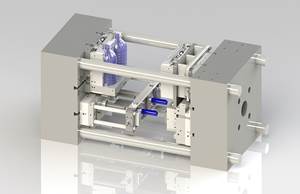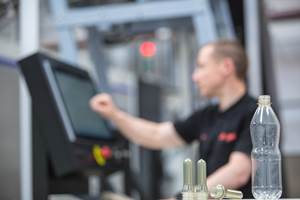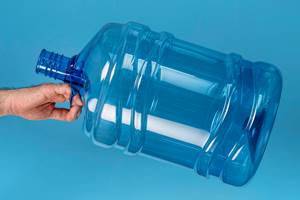From Down Under, A New Giant in PET Bottles
Amcor Ltd. in Melbourne, Australia, recently emerged as a global leader in PET soft-drink, water, liquor, and custom food bottles.
Amcor Ltd. in Melbourne, Australia, recently emerged as a global leader in PET soft-drink, water, liquor, and custom food bottles. Amcor capped its rise to pre-eminence in PET blow molding with the acquisition in July of Schmalbach-Lubeca’s operations in the U.S., Europe, and Latin America.
Just two years ago, Amcor’s PET operations were confined to 11 plants in Canada, Australia, and Latin America. Today, Amcor’s worldwide PET blow molding plant count has jumped to around 50.
Amcor PET Packaging North America (APPNA) in Manchester, Mich., has 23 plants in the NAFTA region, while sister companies operate others in Latin America and Europe. Russell Jones, Amcor Ltd.’s managing director, says creating such a large, integrated blow molding empire has boosted profitability despite intense cost pressures.
Amcor has also increased its “critical mass” in PET bottle design and process technology, says Russell Hubbard, APPNA director of business development. Its acquisitions have brought together into one group a barrier system, panel-design capabilities, and a new processing technology to be unveiled in 2003.
Size does matter
In late 2000, Amcor Ltd. outlined a new vision for itself in PET packaging. Jones said that acquisitions would make Amcor into one of the top five firms in global packaging, ensure it market-share leadership in key segments, and create brand identification for its innovative packages. In short order, the company bought CNC Containers on the U.S. West Coast; Pet Pak, a U.S. liquor-bottle specialist; and the Schmalbach business.
Traditionally, PET bottle molders have been relatively small operations sandwiched between global partners—PET resin suppliers and giant packaging customers like Coca-Cola, Pepsico, and Procter & Gamble—which demand low cost and high levels of service in an ever-broader range of markets. Amcor’s response to this cost squeeze has been to consolidate, integrate, and globalize. As a result, at least one U.S. plant has been closed.
Another response is to build “through-the-wall” plants adjacent to customers’ filling and distribution centers. Five of APPNA’s North American plants, and 15 globally, are already of this type. This model saves freight, tightens inventory, and forges bonds between supplier and customer (e.g., design collaboration). Hubbard expects intensified use of this approach.
Another strategy is to highlight Amcor’s special packaging concepts, including proprietary panel technologies (like Ergo-Grip and PowerFlex), and promote its range of design and engineering capabilities. An example is in closures, where Amcor has two major joint ventures: Bericap and White Cap.
Technology proves critical
Hubbard says growth is high in single-serve, hot-fill, and retort food packaging, including tea, milk, and juices, where heat-set bottles and panel design are critical. When bottles are filled at high temperature, cooling creates a vacuum that can distort the sealed container. Traditional design has put island-like panels into bottles to control distortion, but the penalties are less design freedom and aesthetic appeal.
Amcor’s advanced panel-design concepts promise solutions. One, called Ergo-Grip, utilizes pairs of opposing panels that flex inward to prevent distortion. They permit wider freedom to design for shape and function (e.g., grip and squeezability).
Likewise, the PowerFlex design concept achieves heat-set capability without using traditional panels. The result is more glass-like geometries (e.g., long, flat necks) that cater to mass merchandisers like Wal-Mart that prefer a glass look-alike. Large, flat panels also favor new decoration concepts like the use of full-body shrink labels (see PT, Aug. ’02, p. 38).
Amcor is investigating all PET barrier technologies, from mono- and multi-layer structures and coatings to additives like BP Amoco’s Amosorb oxygen scavenger.
Related Content
At NPE, Cypet to Show Latest Achievements in Large PET Containers
Maker of one-stage ISBM machines will show off new sizes and styles of handled and stackable PET containers, including novel interlocking products.
Read MoreServices to Help Blow Molders Convert to rPET
Sidel launches “RePETable” range of services as “one-stop” solution to efficient adoption of rPET for bottle production.
Read MoreStretching the Boundaries of Large PET Containers
NPE2024: Cypet shows off new capabilities for its ISBM machines.
Read MoreLighter, Higher Performance Base Design for Premium rPET Bottles
Sidel’s StarLITE-R Premium base for thicker rPET bottles ensures bottle stability in high-speed production, while saving energy.
Read MoreRead Next
Lead the Conversation, Change the Conversation
Coverage of single-use plastics can be both misleading and demoralizing. Here are 10 tips for changing the perception of the plastics industry at your company and in your community.
Read MoreSee Recyclers Close the Loop on Trade Show Production Scrap at NPE2024
A collaboration between show organizer PLASTICS, recycler CPR and size reduction experts WEIMA and Conair recovered and recycled all production scrap at NPE2024.
Read MoreBeyond Prototypes: 8 Ways the Plastics Industry Is Using 3D Printing
Plastics processors are finding applications for 3D printing around the plant and across the supply chain. Here are 8 examples to look for at NPE2024.
Read More





















